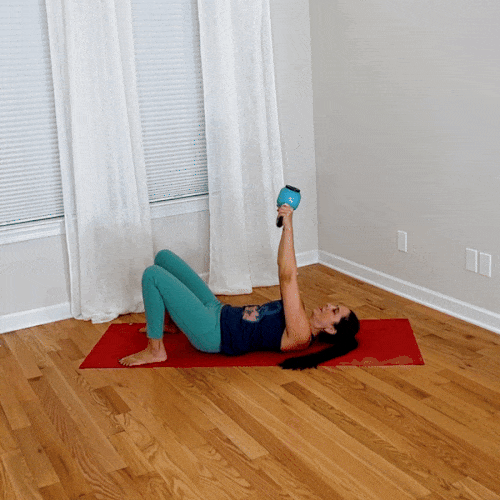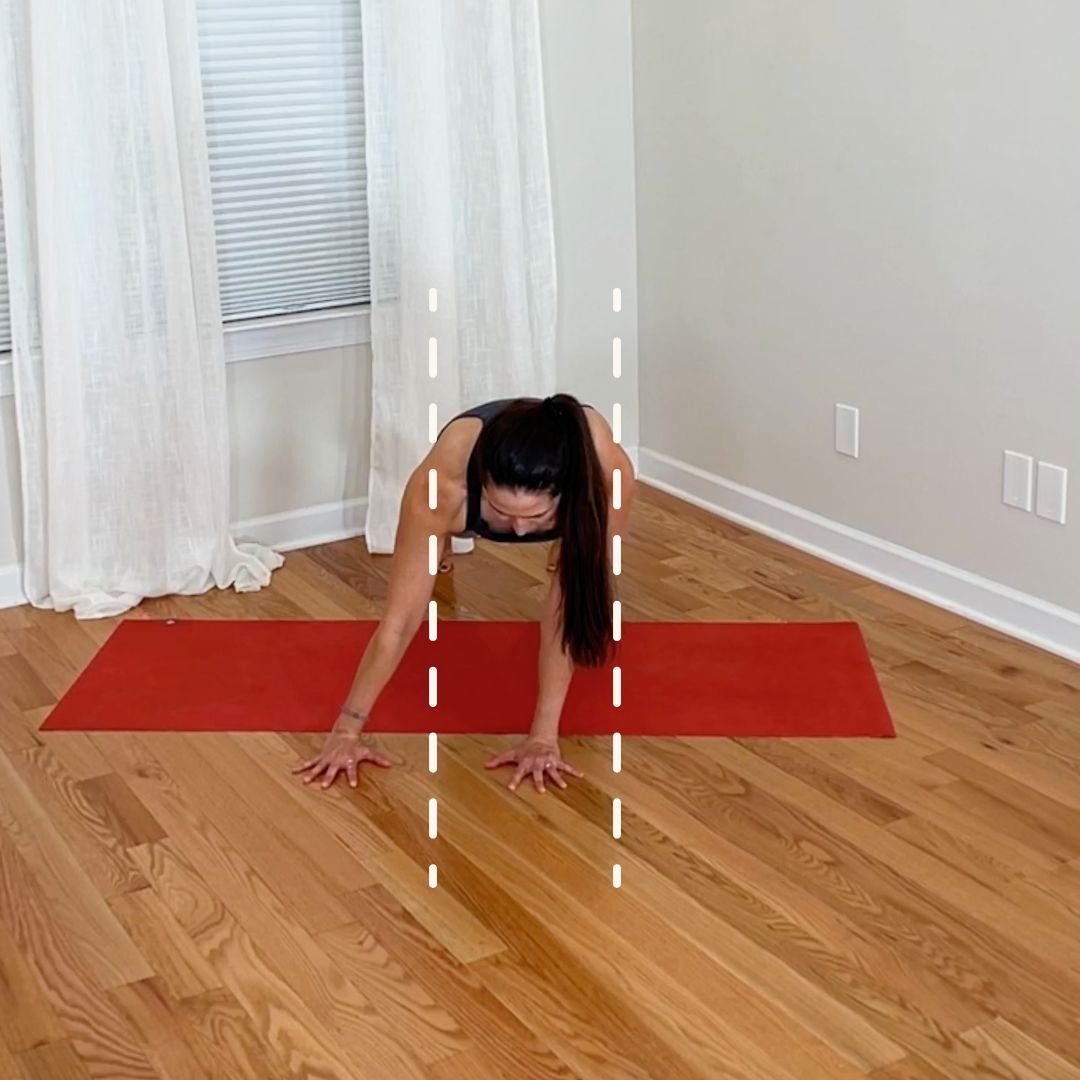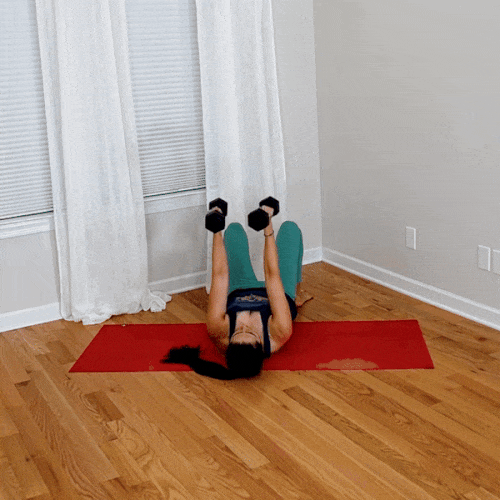Why "Joint Stacking" in Yoga Isn't About Safety
This blog post was first sent to Jenni’s email list as an email newsletter. Sign up for the JRY email newsletter here!
In yoga, we’re often taught to “stack our joints” in poses like plank, side plank, Warrior 1, and Warrior 2. The idea is that aligning our joints vertically with gravity – like keeping the shoulders over the wrists or the knee over the ankle – protects our joints and minimizes the risk of injury.
But… is joint stacking really about safety? Is there scientific support for this idea? Are joints truly at a greater risk of injury when they're not in these stacked positions?
Spoiler alert: No, they’re not.
In this blog post, we'll explore why joint stacking isn’t necessary for injury prevention. We'll look at specific yoga poses, strength training analogies, and the broader concepts of joint health, strength, and adaptability to dismantle the myth that stacked joints are the "safest" position.
Table of Contents
What is Joint Stacking in Yoga?
Joint Stacking for Safety: The Problems With This Claim
Strengthening Joints Through Full Ranges of Motion
What About Efficiency and Aesthetic Alignment?
Teaching Joint Stacking Without Fearmongering
What is Joint Stacking in Yoga?
If you ask Google AI to define 'joint stacking,' here’s the response it provides (at the time of writing this blog post):
"Joint stacking" in yoga means aligning your joints vertically one above the other, ensuring that your knees are over your ankles, shoulders over elbows, and hips over heels, creating a stable foundation in a pose and minimizing the risk of injury by distributing your weight evenly throughout your body; it's a key principle of proper yoga alignment."
As we can see, stacking our joints in yoga poses is commonly taught for safety reasons. (There are other reasons that aligning joints vertically is sometimes taught as well, and we’ll touch on them below. But just to be clear, this blog post is mainly focused on joint stacking for injury prevention reasons.)
Here are some common joint-stacked alignment rules that we learn in our yoga poses:
Plank pose: Shoulders stacked directly over wrists.
Side plank: Bottom shoulder directly over the supporting wrist. (Side note: there’s a separate, but related controversy in the yoga world about side plank – specifically whether the bottom hand should be directly under the shoulder or slightly forward of it. I’ll dive into this hot topic (heh heh) in an upcoming blog post, so stay tuned! For today’s discussion, though, we’ll define a “joint-stacked” side plank as one where the hand is generally aligned vertically beneath the shoulder.)
Warrior 2: Front knee stacked over the front ankle.
Warrior 1: Front knee stacked over the front ankle.
Plank pose with joints “stacked”
Warrior 2 with the front knee stacked over the ankle
Side plank with the shoulder above the wrist
Warrior 1 with the front knee above the ankle
This vertical-line alignment in our yoga poses is often taught as a safety mechanism, with claims that failing to stack the joints puts undue “strain” on them, increasing the risk of injury.
But when we look at the science of movement and strength, we find that joint stacking for safety isn’t as important – or even as accurate – as it’s made out to be.
Joint Stacking for Safety: The Problems With This Claim
1. Joint Stacking Isn't Necessary for Injury Prevention
The idea that joints are only safe when stacked comes from a misunderstanding of how the body works. Our joints are designed to move and bear load across a wide range of positions. Limiting our practice to "safe" joint-stacked alignments not only underestimates our body’s resilience, but also prevents us from strengthening our joints in those other positions.
For example, in plank pose, we’re told the shoulders should stay over the wrists – but what if the shoulders are behind the wrists or forward in front of them, as shown in the images below?
A “misaligned” plank pose with hands forward of shoulders
A “misaligned” plank pose with shoulders forward of wrists
While we’re typically taught to cringe 😬 if we see shoulder alignment like this in plank pose, the truth is that these positions are just different degrees of shoulder flexion.
In the example with the shoulders behind the wrists, the shoulders have simply moved into a higher degree of shoulder flexion. (In other words, the shoulders have lifted slightly more toward an overhead position.)
And in the example with the shoulders in front of the wrists, the shoulders are in a bit less flexion. (Obviously in this second example, the wrists have moved into more extension as well. This is also not an inherently injurious alignment – but one would want to make sure they have the wrist extension range of motion for this position first.)
Now there’s nothing inherently unsafe about loading the shoulders at these “non-stacked” angles. In fact, there are many strength training exercises that load our shoulders through their full range of flexion, strengthening them at every angle.
For example, in a full range front raise exercise, we lift a weight fully overhead, loading our shoulders through all of the angles that make up the arc of flexion. This exercise strengthens the anterior shoulder, and is a very good, advisable move to do!
Full range front raise exercise – loads the shoulders through a full overhead range
And in a pullover exercise, we lower a weight all the way overhead in a reclined position, effectively loading the shoulders from 90° to a full range of flexion. This movement targets the latissimus dorsi – a major back and posterior shoulder muscle – and is excellent for building strength through a full range of motion.
Pullover exercise – strengthens the shoulders in an overhead position
Now, imagine if we were told to keep the weight directly above the shoulder in a 'stacked' position in a pullover exercise, and to avoid moving it forward or backward to “protect” the shoulders. It sounds silly, doesn’t it? Yet this is essentially the same logic as the “stack your shoulders over your wrists to protect your joints” rule in plank pose.
Side-to-Side Alignment in Plank Pose
The examples above covered forward/backward alignment variations in plank pose, but what about side-to-side variations? Specifically, how does shoulder and wrist positioning look when we view plank pose from the front?
The classic plank pose alignment is to keep our shoulders vertically aligned over our wrists from this viewpoint as well:
Traditional plank pose alignment seen from the front
If we were to, say, begin to shift our shoulders to the right or left relative to our wrists, this would take us out of “joint stacked” position – another “misalignment” we’d likely be warned could cause injury:
A “misaligned” plank pose with shoulders to the right
A “misaligned” plank pose with shoulders to the left
There’s also the possibility of “breaking” yoga alignment rules in plank pose by taking both hands out wider than our shoulders, or both hands into a narrow stance inside the shoulders:
A “misaligned” plank with hands wider than shoulders
A “misaligned” plank with hands narrower than shoulders
But as with our forward/backward alignment analysis, there’s also nothing inherently unsafe about loading our shoulders in these sideways-shifted alignments. When we move our arms laterally or medially relative to our shoulders like this, we’re simply moving our shoulders into varying degrees of horizontal abduction and horizontal adduction. And once again, there are plenty of strength training exercises that load our shoulders through a full arc of these side-to-side movements.
For example, in a pec fly, we lower weights out laterally to the side through a full range of horizontal abduction/adduction. This exercise targets our anterior chest muscles:
Pec fly exercise
And in a rear delt fly, we lift weights through this same arc of movement. This exercise targets our posterior shoulder muscles:
Rear delt fly exercise
There’s also the diamond push-up, which is a variation of a classic push-up in which our hands come together, forming a “diamond” shape between our fingers. Diamond push-ups are a great way to strength our triceps, and they require moving in and out of a non-stacked plank position.
Diamond push-up
Putting Yoga Alignment Rules Into Perspective
My hope is for these strength exercise examples to offer us a new and broadened perspective on shoulder movement in yoga. If we regularly load our shoulders in these so-called “non-stacked” positions during strength training – and instead of causing injury, these movements simply help us build strength (which is protective against injury) – why are we so often told that vertical joint stacking is the only safe alignment in yoga?
2. Yoga Contradicts Its Own Rules
Yoga often teaches joint stacking as critical in one pose, then abandons it in the next without concern. For instance:
In plank pose, we’re told the shoulders must be stacked over the wrists to "protect" the wrists and shoulders.
But in downward dog, the shoulders move into an unstacked, diagonal line relative to the wrists. Nobody ever warns against this, and it’s considered perfectly safe.
This contradiction exposes a fundamental flaw in the claim that joint stacking is necessary for safety – it’s inconsistent and unsupported by evidence.
In plank pose, we’re taught that it’s essential to keep shoulders over wrists…
…But in downward dog, our shoulders are over… nothing! And no one worries about this. :)
3. Joint Stacking Isn't the Only Alignment in Yoga
In Warrior 2, we’re taught that the front knee should stay stacked exactly over the ankle, and that we should not let it drift inward or outward because this exposes it to supposedly harmful, laterally-oriented forces.
However, in the back leg of this very same yoga pose, our hip, knee, and ankle are aligned in an oblique, diagonal line (i.e. they are “unstacked”), and the knee is exposed to lateral, valgus forces – and no one worries or warns about this.
Is one knee safe while the other knee is unsafe in warrior 2?
Similarly, if you stand in a wide-legged straddle position – perhaps preparing to fold forward into a wide-legged forward fold (prasarita padottanasana), neither knee is stacked over an ankle. Yet, these positions are perfectly safe and practiced without hesitation.
A standing, wide-legged position
Prasarita padottanasana with a halfway lift
The truth is, joint stacking is simply one way of aligning a pose. It’s not inherently safer or more protective than other alignments.
Strengthening Joints Through Full Ranges of Motion
To truly build resilient joints, we need to move them through their full ranges of motion and load them in various positions. Strength training demonstrates this principle beautifully:
Side Plank
In yoga, we’re often taught that it’s essential to stack the shoulder over the wrist in side plank in order to protect our joints. If we were to practice side plank with the bottom hand behind or out in front of the shoulder, this would likely be labelled a “misalignment” and we’d be corrected back into a “safe”, joint stacked position:
A “misaligned” side plank with the bottom hand behind of the shoulder
A “misaligned” side plank with the bottom hand forward of the shoulder
(Stay tuned for an upcoming blog post where we’ll tackle the separate side plank “controversy” in yoga – should the hand be directly under the shoulder or slightly forward for “true” joint-stacked alignment? For now, let’s focus on the general concept of having the hand roughly under the shoulder as an example of joint-stacking.)
Biomechanically, side plank is a pose that targets the shoulder in a position of abduction. But think about the strength training world’s full range lateral raise, which also targets the shoulders in abduction – but through a full range of this direction of movement:
Full range lateral raise
Or consider the chin-up, which loads the shoulders from abduction through adduction (and also flexion to extension), strengthening the lats and biceps muscles.
Chin-up
Both of these exercises demonstrate that our shoulders are capable of being loaded through a wide variety of angles – not just at 90°, and not just in a vertically-stacked position relative to other joints. While practicing side plank with the wrist directly under the shoulder is a great alignment, it’s not the only safe position for the shoulder in abduction.
Warrior 1
While yoga often discourages the knee from moving forward past the ankle in warrior 1 to “protect the knee”, strength exercises like the knees-over-toes split squat intentionally push the knee beyond the ankle to strengthen the quads and knee joint through a greater range of motion:
Knees-over-toes split squat
The stronger our joints become in a variety of positions, the more resilient they are to injury.
Joint stacking, while perfectly fine, limits us to a single alignment. If we always only load our joints in one fixed position, this could theoretically increase injury risk by limiting our ability to build strength at unstacked angles.
What About Efficiency and Aesthetic Alignment?
It’s important to distinguish between different reasons for joint stacking:
Efficiency: In many cases, when joints are stacked, our muscles don’t have to work as hard because our bones provide structural support. This can be useful if your goal is to conserve energy in a yoga pose.
Aesthetic alignment: Joint stacking often makes poses look neat and aligned, which can be a valid goal in certain yoga traditions.
But neither of these goals has anything to do with safety. And if your aim is to build strength, you need to move beyond stacked alignment and embrace moving your joints through a wide variety of angles.
Teaching Joint Stacking Without Fearmongering
It’s absolutely fine to teach joint-stacked alignment in yoga – after all, that’s often how most of our poses are traditionally practiced. However, we should avoid using language that ties joint stacking to safety or injury prevention. For example:
Instead of saying, "Keep your knee over your ankle in warrior 2 to protect your knee," you might say, "Keep your knee over your ankle and feel the work in your quads."
Instead of saying, "Align your shoulders over your wrists in plank to keep your shoulders safe," you might say, "Align your shoulders over your wrists and push the floor away through your arms.”
This subtle shift in language avoids fearmongering and helps students understand that joint stacking is a choice – not a necessity for safety.
Final Thoughts: Building Resilience Through Variability
To build strong, resilient joints, we need to move them in all directions and load them through their full ranges of motion. While joint stacking can serve aesthetic or efficiency goals, it’s not necessary for safety – and always practicing in stacked alignment may even limit our strength and adaptability.
By embracing variability in our yoga practice, we can give our joints the opportunity to grow stronger, adapt to different demands, and become more resistant to injury. So feel free to stack your joints when it feels right, but know that unstacked joints are just as safe – and may even be stronger for it.






























